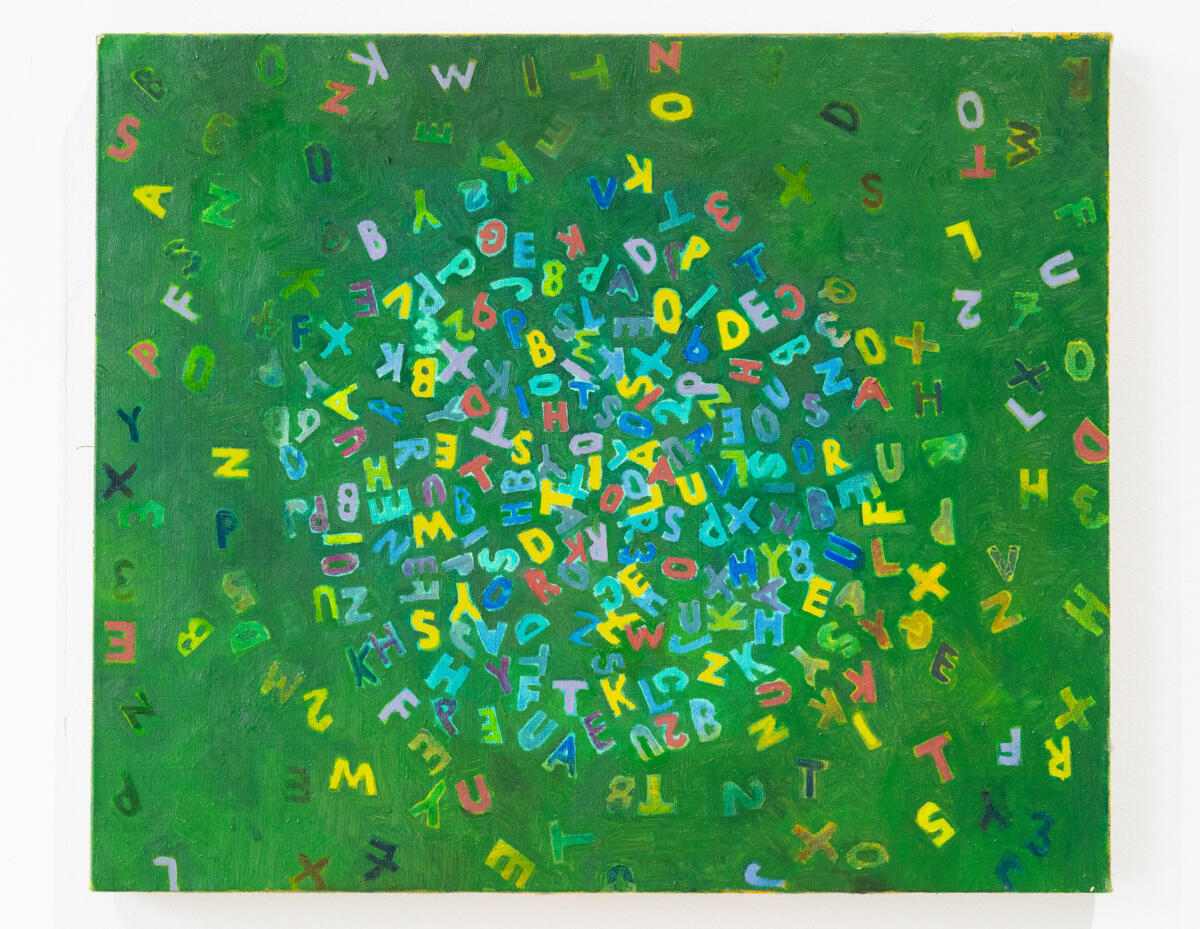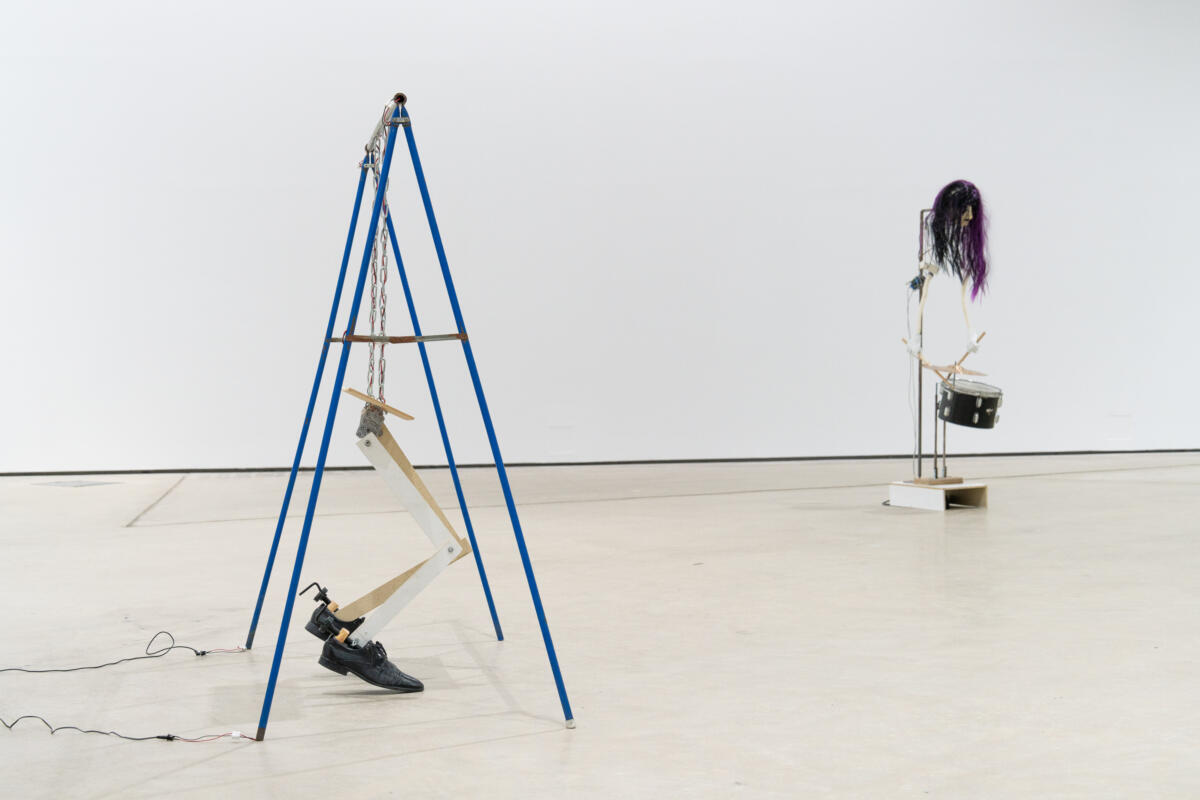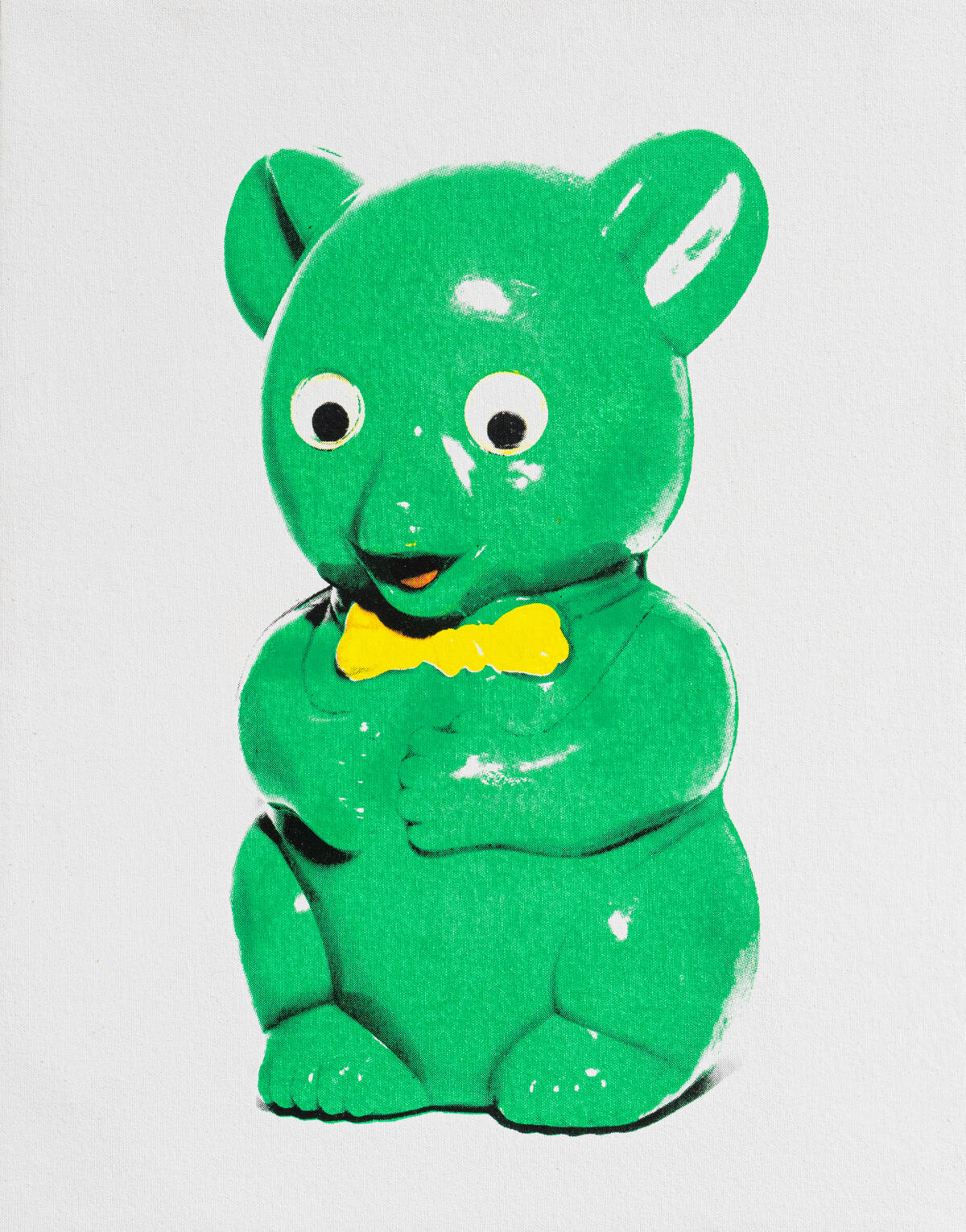Endless Drop
1.–17.11.2024 (closed Sat 2.11.)

Endless Drop is a group exhibition with eight artists looking into the theme of fear and questions around it. In which situations does fear occur and show itself, even if it seems contradicting? Does fear form into a physical being? Or an image? What is fear actually? Reflecting on contemporary reality as ever more ridden with uncertainties and indeterminacies, sociologist Zygmunt Bauman coined the term liquid fear to describe a fear towards something abstract and formless. Liquid fear expresses the undefined and ambivalent motions of contemporary times, which cannot be perceived as one simple truth. Endless Drop draws toward the individual and collective experiences of fear which travel with us in our lives.
Exhibition opening on Thursday 31 October from 5 to 7 pm – a warm welcome!
Exceptions to opening hours
Exhibitions are closed on All Saints’ Day, Saturday 2 November.
Artists
Installation views




Exhibition text
At the end of the 1800s residents of Atlantic City were entertained by shows of horse diving, where a horse, with or without a rider, jumped (or rather was dropped) off a diving tower and plunged into water. Invented by the occasion of an accident, the horse diving performances carried on well into the 1900s with even some attempts to reinvigorate the act towards the end of the century. (In the 1990s there was even a Disney film made on the premise of a memoir of a certain horse diver). In retrospect, one can wonder whether this sad spectacle, the drop and plunge of the horse, falls into the category of curiosity or horror.
The process for the exhibition Endless Drop has been guided by the theme of fear. Instead of horror or spectacle, Endless Drop looks at the wavering tensions and contradictions linked to fear. Sometimes something great and spectacular can make one feel small and fearful. Sometimes a familiar object, thought, or image can seem distorted, somehow twisted and strange. Sociologist Zygmunt Bauman (1925 – 2017) has written about liquid fear to describe a fear towards something abstract and formless. He relates liquid fear to reflect a contemporary reality which is ever more ridden with uncertainties and indeterminacies. Liquid fear expresses the undefined and ambivalent motions of contemporary times, which cannot be perceived as one simple truth; it is formless and volatile.
A common phrase from the past years has come to be, that there’s no going back to normal. Sitra, a Finnish organization dedicated to research on future, has expressed in their reports of moving towards “a time of surprises, contradictions and conflicts.” Cultural theorist Ziauddin Sardar (b. 1951) has called this postnormal times. Looking at the shift to postnormal times through the phenomena of the 2010s, Sardar picks up the term post truth as an example. What does it indicate that questioning truth is included in our vocabulary? And further, that this was chosen to represent the ‘zeitgeist’ of our time, as it was chosen for the word of the year by The Oxford Dictionary in 2016.
If truth can not be trusted, a premise for anything to be a lie is opened. A story is described as complicated, and so it discourages attempts to understand, or atleast poses interpretations against each other and alludes focus elsewhere. It becomes a nonsensical soup of words – the ways of influence are many. Under those circumstances, the association of familiar to relate with security has more to do with illogical repetitive habits than lived reality. We turn backwards, because the past seems real, truthful. We repeat actions because they are familiar, but perhaps they don’t bring security. Security can be masked to hide something else, and so ambiguity becomes a tactic.
The accident which cultivated the invention of horse diving was a collapse; a bridge broke down and a horse and its rider walking over it fell into water. In a way, every dive after that has been a repetition of that collapse. Perhaps it was also an attempt to seize the collapse, to control it. For Sardar postnormal time isn’t about the world collapsing, but rather about a new positioning in not knowing what is to come and the loss of control. In a technocratic world, a clear answer is always presumed, but in unclear and indeterminate times issues get into twists and contradictions.
Navigating ambiguity is burdening, thus the search for an escape. Two years ago, the afore-mentioned dictionary chose goblin mode as the word of the year. Instead of an immobilizing rigidness is the urge to mess around, go stupid. Escaping the constant responsibility of awareness. On the other side of fear is the venture to numb these feelings. Somewhere it’s the construction of something exclusionary and limiting, something lonely. Elsewhere it’s the search for something captivating and entrancing, something bigger than reality. The background noise can be faded with a higher intensity – an endless drop.
Text: Isa Lumme
Endless Drop is a group exhibition with eight artists looking into the theme of fear and questions around it. In which situations does fear occur and show itself, even if it seems contradicting? Does fear form into a physical being? Or an image? What is fear actually? Reflecting on contemporary reality as ever more ridden with uncertainties and indeterminacies, sociologist Zygmunt Bauman coined the term liquid fear to describe a fear towards something abstract and formless. Liquid fear expresses the undefined and ambivalent motions of contemporary times, which cannot be perceived as one simple truth. Endless Drop draws toward the individual and collective experiences of fear which travel with us in our lives.
Exhibition opening on Thursday 31 October from 5 to 7 pm – a warm welcome!
Exceptions to opening hours
Exhibitions are closed on All Saints’ Day, Saturday 2 November.
Artists
Installation views




Exhibition text
At the end of the 1800s residents of Atlantic City were entertained by shows of horse diving, where a horse, with or without a rider, jumped (or rather was dropped) off a diving tower and plunged into water. Invented by the occasion of an accident, the horse diving performances carried on well into the 1900s with even some attempts to reinvigorate the act towards the end of the century. (In the 1990s there was even a Disney film made on the premise of a memoir of a certain horse diver). In retrospect, one can wonder whether this sad spectacle, the drop and plunge of the horse, falls into the category of curiosity or horror.
The process for the exhibition Endless Drop has been guided by the theme of fear. Instead of horror or spectacle, Endless Drop looks at the wavering tensions and contradictions linked to fear. Sometimes something great and spectacular can make one feel small and fearful. Sometimes a familiar object, thought, or image can seem distorted, somehow twisted and strange. Sociologist Zygmunt Bauman (1925 – 2017) has written about liquid fear to describe a fear towards something abstract and formless. He relates liquid fear to reflect a contemporary reality which is ever more ridden with uncertainties and indeterminacies. Liquid fear expresses the undefined and ambivalent motions of contemporary times, which cannot be perceived as one simple truth; it is formless and volatile.
A common phrase from the past years has come to be, that there’s no going back to normal. Sitra, a Finnish organization dedicated to research on future, has expressed in their reports of moving towards “a time of surprises, contradictions and conflicts.” Cultural theorist Ziauddin Sardar (b. 1951) has called this postnormal times. Looking at the shift to postnormal times through the phenomena of the 2010s, Sardar picks up the term post truth as an example. What does it indicate that questioning truth is included in our vocabulary? And further, that this was chosen to represent the ‘zeitgeist’ of our time, as it was chosen for the word of the year by The Oxford Dictionary in 2016.
If truth can not be trusted, a premise for anything to be a lie is opened. A story is described as complicated, and so it discourages attempts to understand, or atleast poses interpretations against each other and alludes focus elsewhere. It becomes a nonsensical soup of words – the ways of influence are many. Under those circumstances, the association of familiar to relate with security has more to do with illogical repetitive habits than lived reality. We turn backwards, because the past seems real, truthful. We repeat actions because they are familiar, but perhaps they don’t bring security. Security can be masked to hide something else, and so ambiguity becomes a tactic.
The accident which cultivated the invention of horse diving was a collapse; a bridge broke down and a horse and its rider walking over it fell into water. In a way, every dive after that has been a repetition of that collapse. Perhaps it was also an attempt to seize the collapse, to control it. For Sardar postnormal time isn’t about the world collapsing, but rather about a new positioning in not knowing what is to come and the loss of control. In a technocratic world, a clear answer is always presumed, but in unclear and indeterminate times issues get into twists and contradictions.
Navigating ambiguity is burdening, thus the search for an escape. Two years ago, the afore-mentioned dictionary chose goblin mode as the word of the year. Instead of an immobilizing rigidness is the urge to mess around, go stupid. Escaping the constant responsibility of awareness. On the other side of fear is the venture to numb these feelings. Somewhere it’s the construction of something exclusionary and limiting, something lonely. Elsewhere it’s the search for something captivating and entrancing, something bigger than reality. The background noise can be faded with a higher intensity – an endless drop.
Text: Isa Lumme